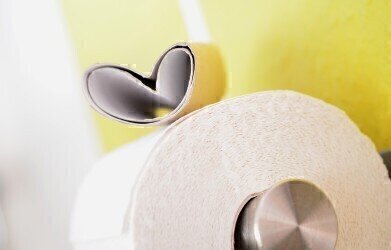Water/wastewater
Are Waterless Toilets the Way Forward?
Dec 17 2016
New technology supported by the Bill and Melinda Gates Foundation could provide the answer to conserving the most precious resource on our planet – water. Nicknamed the Nano-Membrane Toilet, this completely waterless unit separates waste out into solid and liquid, before recycling and disposing of it effectively.
With roughly 2.4 billion people without access to running water or sanitary toilet facilities worldwide, the Nano-Membrane could be a significant step forward in improving the living conditions of countless impoverished families around the world.
How it works
Developed by a team of researchers at Cranfield University, the toilet works completely without the use of water. Instead, the rotating bowl will simply drop all waste down a chute once the lid has been closed, while a scraper will deal with any residue.
The waste then passes through specially arranged bundles of nanofibers, which work to separate out the liquid from the vapour. The vapour is processed to turn it into actual water and filtered of any impurities, making it fit to be used for cooking, bathing and watering plants (though not consumption). The solid waste, meanwhile, is sent to a biomass power plant where it can be converted into energy for use by all of the local community.
As for toilet paper, that is still a kink that needs ironing out with the system – at present, all paper must be thrown into a bin next to the toilet. Its creators have been experimenting with the idea of burning used paper, though that has not been wholly successful as yet.
Where will the toilet be used?
The toilet was initially designed for entry into a competition hosted by the Bill and Melinda Gates Foundation to find a completely waterless toilet which could be used in impoverished communities. As per the requirements of entry, it’s estimated that the Nano-Membrane Toilet will be capable of servicing up to 10 people for only $0.05 per day.
Ultimately, it will be used in remote communities, though its creators would like to trial it in urban environments to begin with. This is because the toilet requires emptying on a weekly basis and its batteries will also need to be replaced periodically, while larger maintenance will have to take place every six months. As a result, it will be kept within city environs until the technology has been improved.
“The toilet will be used in dense urban areas where a number of factors make providing good sanitation very challenging, but where it would be possible to facilitate visits from a maintenance technician,” explained Alison Parker to Business Insider. Parker is a lecturer at Cranfield Water Science Institute and one of the members of the team behind the design.
What next?
If the Nano-Membrane Toilet undergoes successful trials, it could greatly work to alleviate poor sanitary conditions for billions of people all over the world. But though it produces water that is fit for cleaning and cooking purposes, it cannot create potable water.
Several projects have been looking at how to turn wastewater into clean, drinking water but as yet, no major breakthroughs in the field have been forthcoming. With water shortages affecting many people all over the globe, the Nano-Membrane Toilet could be the way of the future, but it will require additional technology to meet all of the Earth’s population’s water needs.
Digital Edition
AET 29.2 May 2025
May 2025
Water / Wastewater- From Effluent to Excellence: Microbiological assessment of a containerized modular water reuse pilot system- Without water everything comes to a haltAir Monitoring- Probe Sampli...
View all digital editions
Events
Jun 17 2025 Guangzhou, China
Singapore International Water Week Spotlight 2025
Jun 23 2025 Singapore
Jun 24 2025 Santa Clara, CA, USA
Jun 25 2025 Sao Paulo, Brasil
Jun 28 2025 Albena, Bulgaria

_1000x1500.jpg)


.jpg)



.jpg)










